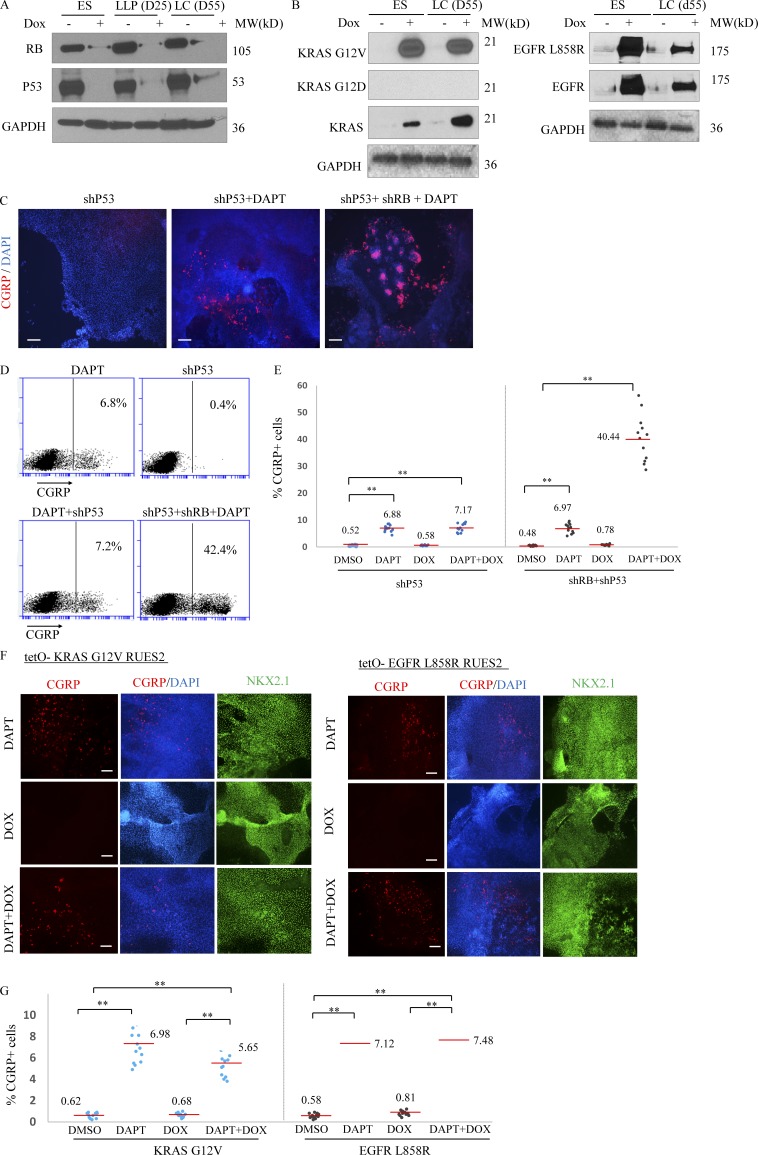Figure 4.
Inhibition of the p53 tumor suppressor gene or expression of two common lung cancer oncogenes do not augment production of PNECs in the presence and absence of DAPT. RUES2 cells carrying DOX-inducible transgenes that encode shRNAs targeting P53 or RB or mutant alleles of KRAS (G12V) or EGFR (L858R) were used as in the experimental protocol shown in Fig. 2 A to measure the effects of DOX induction of the indicated transgenes from day 25 to 55 on production of PNECs. (A) DOX-dependent expression of oncogenes or shRNAs in RUES2 cells. Western blots show RB and P53 tumor suppressor proteins after DOX induction of shRNA cassettes. (B) Production of proteins encoded by DOX-regulated transgenes encoding KRAS-G12V (left) and EGFR-L858R (right). Proteins were detected by the indicated antibodies (Materials and methods section). (C–G) Decreased P53 or production of mutant KRAS or EGFR proteins fail to increase the percentage of PNECs. The indicated RUES2 cell lines were tested for the appearance of PNECs at day 55 by immunofluorescence staining for CGRP (C and F) and by FACS (D, E, and G). See text for interpretation. Scale bars, 100 µm (C) and 200 µm (F). **, P < 0.01 by one-way ANOVA test. Horizontal red lines denote average values. Biological repeats (n) = 12 for E and 13 for G.

